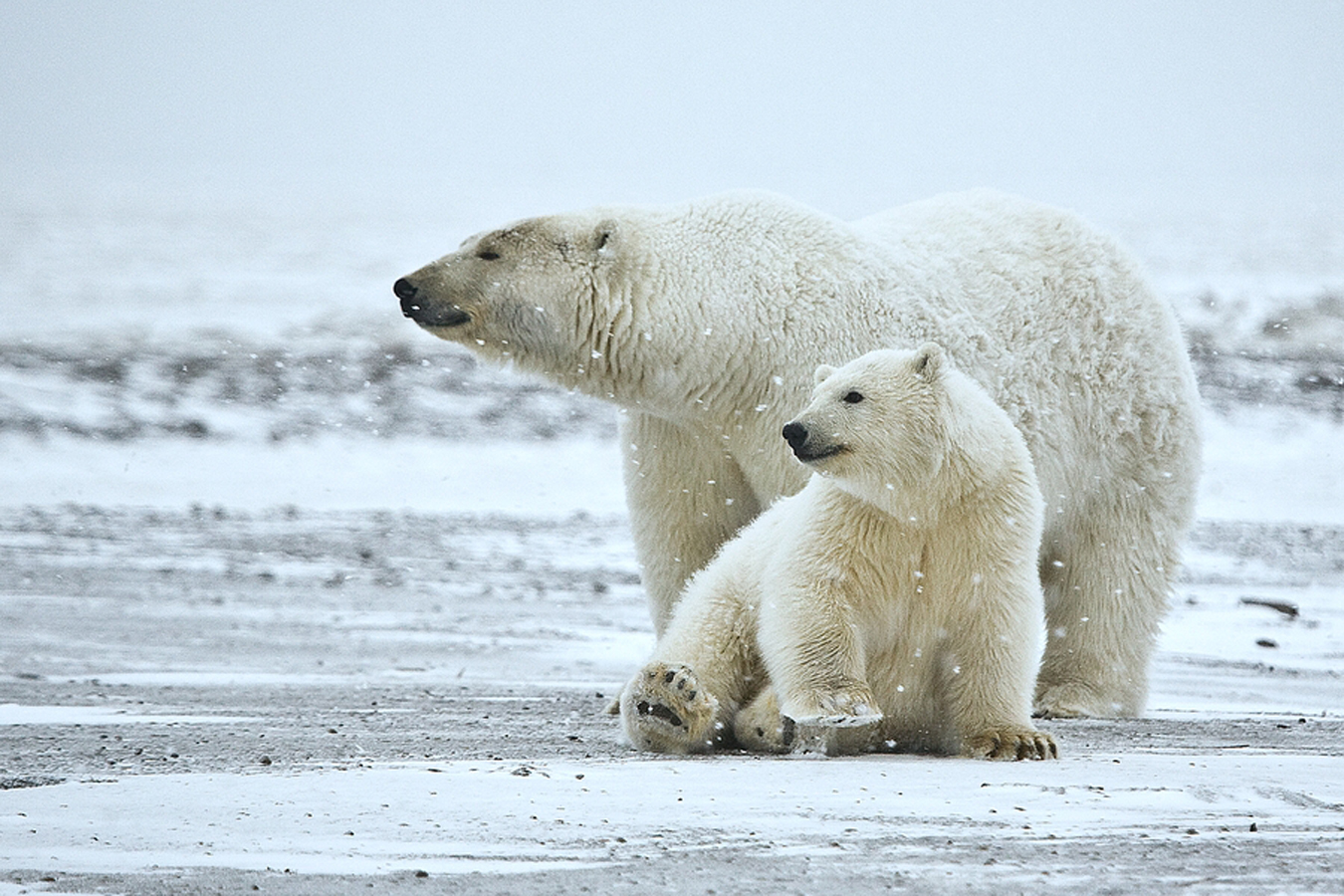Polar bears are uniquely specialized for life in the arctic, given a range of morphological, physiological and even behavioral evidence. That doesn't mean conducting research on the evolutionary history of polar bears is easy. The arctic giant spends most of its life on sea ice, and typically also dies there. Its remains sink to the sea floor and get ground up by glaciers or remain undiscovered. Fossil remains of polar bears are scarce but because the genetic information contained in each organism carries a lot of information about the past, modern researchers can study the history of the species by looking at the genes of today’s polar bears.
Recent studies, based on DNA from the mitochondria (organelles often called the ‘powerhouses of the cell’), had suggested that the ancestor of polar bears was a brown bear that lived some 150,000 years ago, in the late Pleistocene. Researchers recently took an in-depth look at the genetic information contained in the cell nucleus. Frank Hailer, LOEWE Biodiversität und Klima Forschungszentrum (BiK-F) and lead author of the study explains, “Instead of the traditional approach of looking at mitochondrial DNA we studied many pieces of nuclear DNA that are each independently inherited. We characterized those pieces, or genetic markers, in multiple polar and brown bear individuals.”
The genetic survey information obtained from nuclear DNA indicates that polar bears actually evolved in the mid Pleistocene, some 600,000 years ago - much more time for the polar bear ancestors to colonize and adapt to the harsh conditions of the arctic. Based on studies of mitochondrial DNA, polar bears had earlier been considered an example of surprisingly rapid adaptation of a mammal to colder climates. The polar bear’s specific adaptations, including its black skin, white fur, and fur-covered feet now seem less surprising. “In fact, the polar bear genome harbours a lot of distinct genetic information”, says Hailer, “which makes a lot of sense, given all the unique adaptations in polar bears.”

Maternally inherited (mitochondrial) DNA was showing a biased picture
Studies of mitochondrial DNA had indicated that polar bears are much younger as a species - the discrepancy can be explained due to past events of hybridization between polar and brown bears - a process recently observed in the Canadian arctic. After their initial speciation, polar bears and brown bears came into contact again and the mitochondrial DNA found in polar bears today was probably inherited from a brown bear female that hybridized with polar bears at some point in the late Pleistocene.
But it appears that much of the nuclear genome remained unaffected by hybridization, so polar bears retained their genetic distinctiveness. “Each part of the genome tells its own story. In our study we analysed nuclear DNA that is inherited from both parents. It provides a more detailed and accurate picture of the evolutionary history of a species than mitochondrial DNA that is inherited only from the mother”, says Axel Janke, BiK-F, senior author on the study who also headed the recent sequencing of the brown bear genome. “Inferring a species’ evolutionary history based on mitochondrial DNA alone is like solving a puzzle with only a few of the many available pieces. You need to study many genetic markers (loci) to put together the full picture.”
The new genetic data also indicate that polar bears went through tough times over the course of their 600,000 year-old evolutionary history. Polar bears show much less genetic diversity than brown bears, probably due to dramatic reductions in population size in the past.
Study: Hailer, F. et al. (2012). Nuclear Genomic Sequences Reveal that Polar Bears Are an Old and Distinct Bear Lineage. Science. DOI: 10.1126/science.1216424





Comments